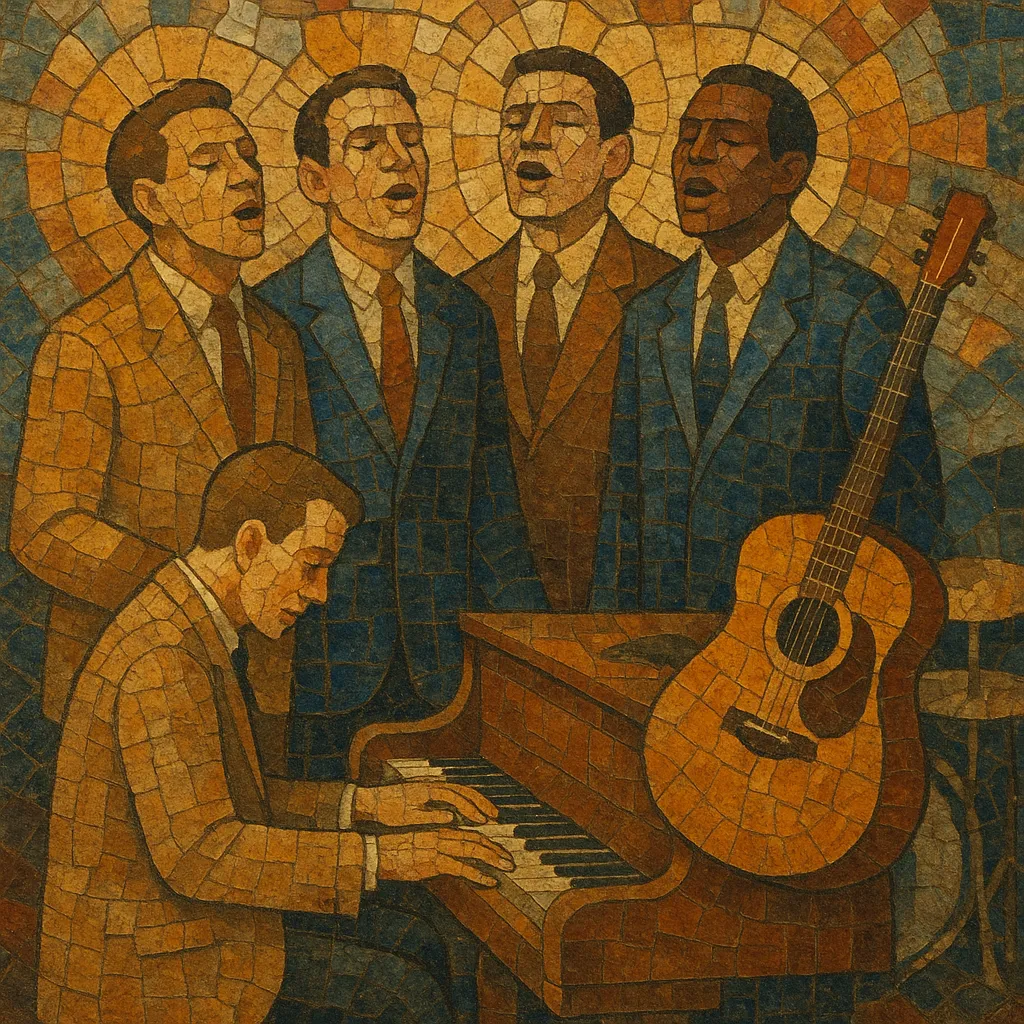
Southern gospel is a Christian vocal music tradition rooted in the American South that centers on close-harmony ensembles—most famously male quartets—singing testimonies of faith, hope, and salvation. It is typically piano-led, with supportive acoustic or electric guitars, bass, and light drums, and it emphasizes rich, stacked harmony parts (lead, tenor, baritone, bass) and memorable, congregational choruses.
Musically, it blends the harmony craft of barbershop and shape-note/Sacred Harp singing with the tunes and storytelling of early country and Appalachian folk. Songs often feature clear verse–chorus forms, dramatic dynamic builds, and a signature last-chorus key change. Lyrically, the style is explicitly evangelical, focusing on redemption, heaven, personal testimony, and encouragement.
Southern gospel’s DNA formed in the shape-note/Sacred Harp singing schools and church revivals of the American South. Traveling singing teachers and publishers (later including Stamps-Baxter in the 1920s) spread repertoire and trained singers in sight-reading and part-singing, laying the foundation for quartet harmony and the convention singing culture that birthed the genre.
As radio expanded, male quartets took southern gospel beyond local conventions. Groups like The Blackwood Brothers and The Statesmen popularized the format with powerful lead vocals, resonant basses, and showmanship, backed by virtuosic gospel piano. Songbook companies fueled a steady stream of new material, while conventions and all-night sings built a devoted fan base.
The genre broadened beyond strictly male quartets to mixed groups and family ensembles. Production adopted elements from country and Nashville studio craft—full rhythm sections, pedal steel, and polished arrangements—without losing quartet harmony. Institutions like the National Quartet Convention and awards shows helped professionalize touring, radio promotion, and artist development.
Gaither Music’s Homecoming concerts and videos reintroduced classic southern gospel to new audiences and connected legacy artists with emerging groups. The Cathedrals’ success and the rise of acts like Gold City and The Hoppers cemented a modern sound: bright, piano-forward, harmony-driven songs with anthemic choruses and uplifting messages.
Southern gospel thrives through festivals, regional radio, streaming playlists, and vibrant live circuits. While retaining its quartet core, the style embraces contemporary production, tighter pop-leaning song forms, and broader instrumentation, continuing its role as an accessible, harmony-rich branch of Christian music.

